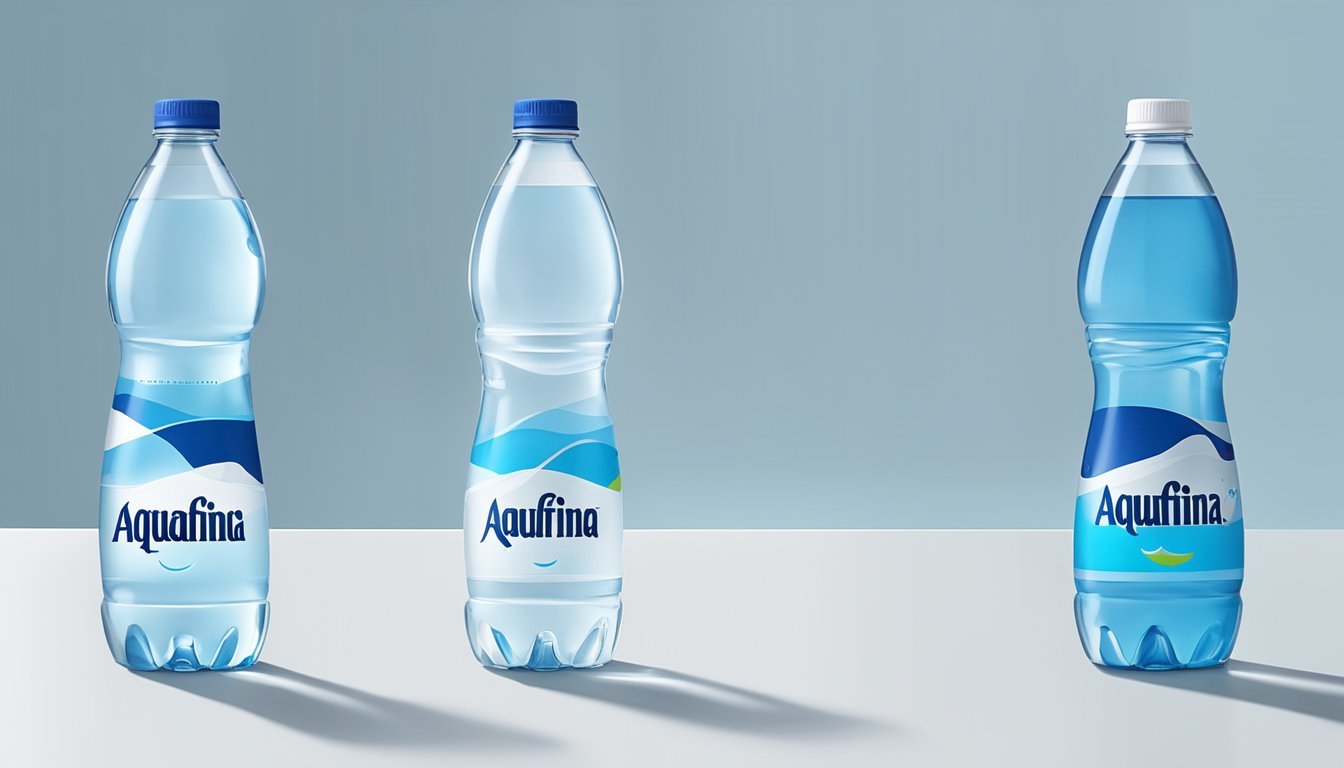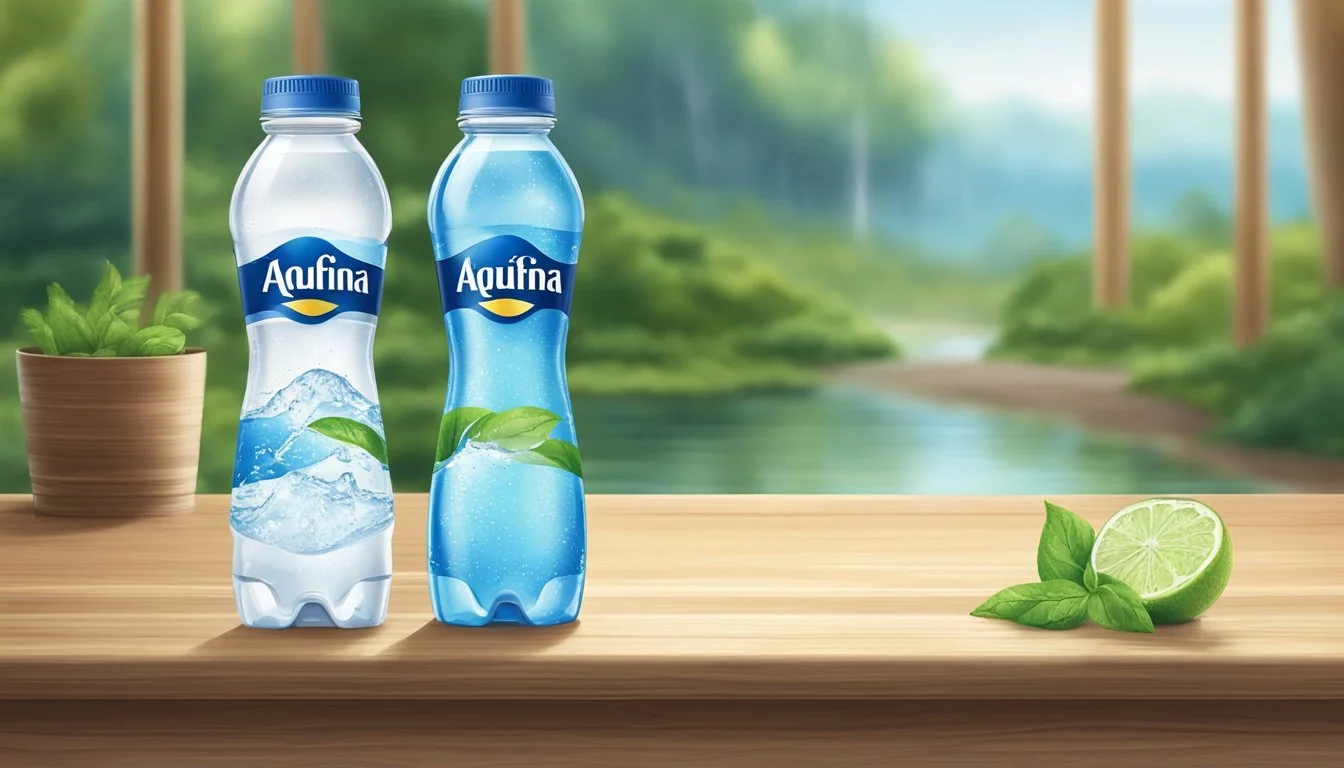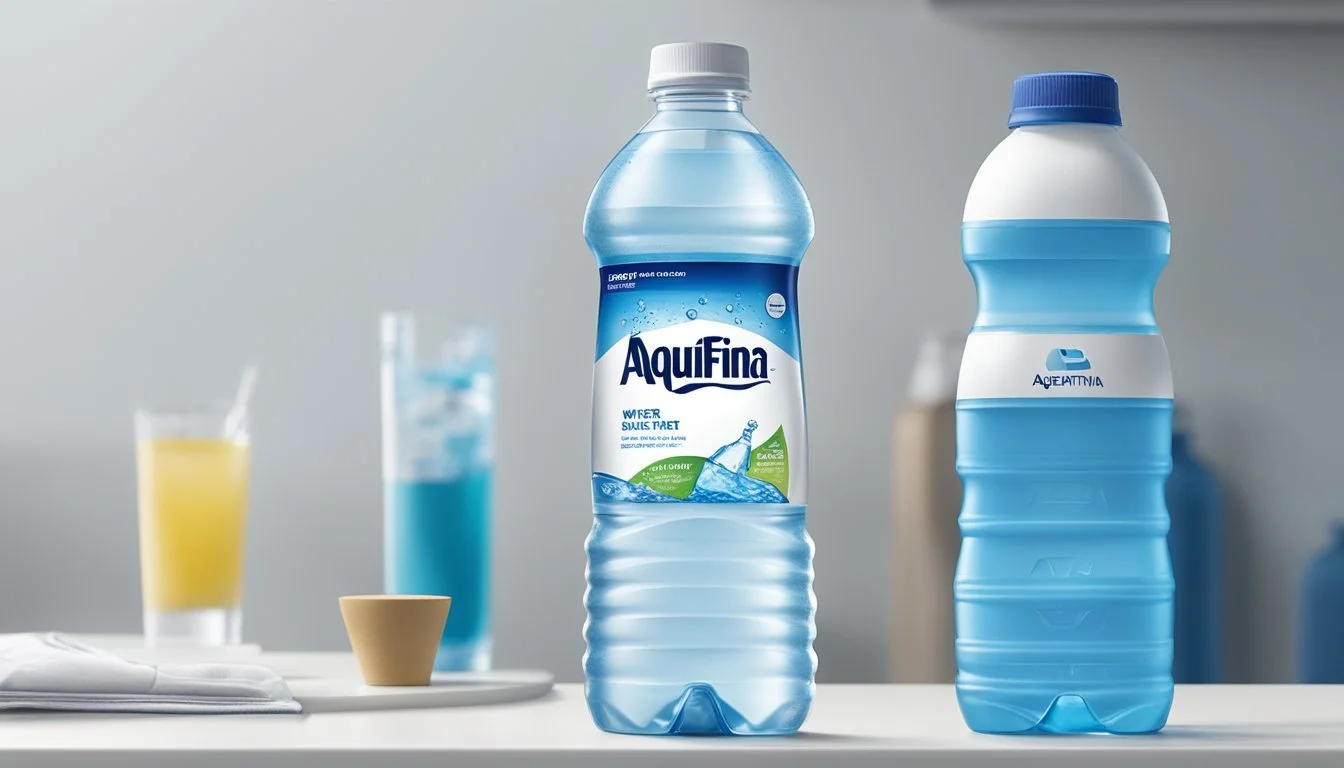Aquafina vs. Flow
A Comparative Analysis of Bottled Water Brands
When it comes to choosing the best bottled water, both Aquafina and Flow have their loyal followers and distinct characteristics. Aquafina, owned by PepsiCo, is widely known for its consistent quality and availability across various retailers. On the other hand, Flow is celebrated for its eco-friendly packaging and alkaline water, appealing to health-conscious consumers.
For hydration purposes alone, Aquafina might be a more practical choice due to its accessibility and affordability. However, Flow's commitment to sustainability and its higher pH level make it a strong contender for those prioritizing environmental impact and potential health benefits.
Understanding the differences between Aquafina and Flow will help you make an informed decision next time you're in the bottled water aisle.
Overview of Bottled Water Industry
The bottled water industry has grown significantly in recent years, driven by consumer demand for convenience and perceived purity. Various brands, including Aquafina and Flow, offer distinct purification processes and brand philosophies as they compete in the global market.
Significance of Bottled Water Brands
Bottled water brands play a crucial role in shaping consumer preferences. They often emphasize the purity, taste, and health benefits of their products to differentiate themselves. Aquafina, for example, highlights its 7-step HydRO-7 filtration process, ensuring the removal of impurities found in public water supplies.
Flow stands out with its natural spring water, marketed as sustainably packaged in eco-friendly cartons. These branding efforts not only attract health-conscious consumers but also appeal to those concerned with environmental impact. Brand loyalty and reputation can significantly influence purchasing decisions, underlining the importance of trust in bottled water brands.
Key Players in the Market
The bottled water market includes both large corporations and niche brands, each fighting for market share. Aquafina, a product of PepsiCo, and Flow, known for its eco-friendly approach, are prominent players. Nestlé Pure Life and Dasani are other major brands, each with unique selling propositions.
For instance, Dasani incorporates a proprietary reverse osmosis filtration and adds mineral salts to enhance flavor. The market also sees strong competition from sparkling water brands, such as Sparkling Ice, which dominated its segment with significant sales growth. This diversity and competition drive innovation and variety in the industry, catering to different consumer preferences and needs.
The Sources of Bottled Water
The origin of bottled water can vary greatly, affecting its taste and purity. This section outlines the differences between Aquafina's filtration process and Flow's natural spring water sourcing.
Understanding Water Sources
Bottled water can be sourced from various environments. Common sources include tap water, spring water, and groundwater. Tap water is typically processed through filtration and purification. Spring water emerges naturally from underground springs and is usually collected at the source. Each type of source impacts the mineral content and purity of the water.
Aquafina's Purification Process
Aquafina, owned by PepsiCo, sources its water from public water systems. The water undergoes a rigorous purification process known as HydRO-7. This process includes several stages such as reverse osmosis, which helps remove impurities and contaminants. The goal is to exceed federal purity standards while ensuring a clean, crisp taste. This technique filters out substances that might be present in ordinary tap water, delivering a product that aims for consistency and quality.
Flow's Spring Water Journey
Flow sources its water from natural underground springs. Specifically, their water is collected from pristine springs that are carefully selected for their natural purity. Unlike Aquafina, Flow's water does not go through extensive artificial purification processes. Instead, it maintains its natural mineral composition, offering a more organic taste. The water is collected directly at the source, ensuring it retains its original properties without additional enhancements or filtration steps.
Water Quality and Safety Standards
Aquafina and Flow prioritize high-quality water that meets stringent safety standards. This section explores the safety measures, purity, and regulatory compliance of both brands.
Analyzing Safety and Purity
Aquafina ensures safety through rigorous purification. Its HydRO-7 process removes contaminants, offering consumers water free from harmful substances.
In contrast, Flow relies on natural springs that already deliver mineral-rich water. To maintain safety, Flow conducts regular testing to ensure purity.
Both brands aim to keep their water uncontaminated. Aquafina removes substances through advanced filtration, while Flow leverages natural purity and additional safety checks. Protecting consumers from health hazards like lead or arsenic is a shared priority.
Regulatory Compliance
Aquafina adheres to FDA regulations, emphasizing both quality and safety. Routine checks and quality control processes help maintain compliance with these standards.
Flow follows similar protocols, aligning its practices with stringent regulatory requirements. Monitoring by regulatory bodies ensures both brands meet safety standards, providing public trust.
Consumer Reports have highlighted Aquafina's adherence to the highest safety benchmarks, while Flow’s natural spring water meets both FDA and additional health guidelines. Regular inspections and adherence to guidelines frame their commitment to delivering safe, high-quality bottled water.
Health and Hydration
When comparing Aquafina and Flow, it’s important to assess the impact on health and hydration. These factors include essential minerals, electrolytes, and the overall health benefits of staying properly hydrated.
Essential Minerals and Electrolytes
Aquafina and Flow both aim to provide hydration, but their composition varies significantly.
Aquafina: Aquafina uses reverse osmosis to purify its water. While this results in very clean water, it also means Aquafina lacks minerals and electrolytes, eliminating potentially beneficial elements.
Flow: Flow water sources its benefits from natural springs and is marketed as alkaline water. This means it contains essential minerals like calcium, magnesium, and potassium. The presence of these minerals can aid in muscle function, bone health, and maintaining the body’s electrolyte balance.
In summary, Flow offers more in terms of essential minerals and electrolytes compared to Aquafina, which could be more beneficial for those seeking superior hydration.
Health Benefits of Optimal Hydration
Optimal hydration is crucial for overall health, impacting everything from cognitive function to physical performance.
Aquafina: Aquafina ensures hydration with its purity, however, the lack of natural minerals means it might not provide as many added health benefits. Despite this, drinking Aquafina is still effective for basic hydration needs.
Flow: Known for its alkaline properties, Flow claims benefits such as better acid-base balance in the body. The presence of natural electrolytes enhances superior hydration. Such hydration is essential for things like skin health, digestion, and maintaining energy levels.
Flow can potentially offer more health benefits due to its mineral content, making it a stronger choice for those looking to maximize their hydration’s health impact.
Comparative Taste Profile
Aquafina and Flow each offer distinct taste profiles influenced by their unique water sources and purification processes. Analysis of taste test outcomes and consumer feedback highlights the differing taste experiences between these two brands.
Taste Test Findings
Taste tests frequently highlight the clean, crisp taste of Aquafina, attributed to its rigorous seven-step purification process. Many testers describe Aquafina as having a neutral taste with no aftertaste. This purification method removes impurities, resulting in a consistently pure flavor.
Flow, on the other hand, is known for its smooth and slightly alkaline taste, which stems from its source in mineral-rich springs. This natural alkalinity gives Flow a distinctive taste that some find more refreshing and palatable compared to purely purified waters like Aquafina.
In comparative taste tests, participants often note the silkiness of Flow, comparing it to the straightforward, no-frills flavor of Aquafina. These differences can be pivotal for consumers deciding between the two.
Consumer Preferences and Perceptions
Consumers tend to favor Aquafina for its consistency and reliability. Those who prefer a neutral-tasting water with no surprises may lean towards Aquafina. Its widespread availability and trusted brand reputation also play significant roles in its popularity.
Flow appeals to consumers looking for natural and eco-friendly options. Its unique Tetra Pak packaging and commitment to sustainability resonate with environmentally conscious buyers. Moreover, the naturally alkaline taste is praised by those who enjoy a subtle mineral flavor in their water.
Overall, preferences can vary widely based on individual taste and values. While Aquafina offers a predictable and pure taste, Flow provides a distinctive flavor profile, backed by its natural source and sustainable practices.
Environmental and Sustainability Considerations
Aquafina and Flow have distinct differences when it comes to their environmental and sustainability practices. These differences can be seen in their bottling processes, packaging materials, and recycling efforts.
Bottling Process and Packaging
Aquafina, a product of PepsiCo, primarily uses single-use PET plastic bottles for packaging. While these bottles are lightweight and convenient, they contribute significantly to plastic waste. PepsiCo has made some strides in using recycled plastics, but the majority are still new PET plastic.
Flow, on the other hand, markets itself as a more sustainable option. It uses Tetra Pak cartons, which are made from a combination of paperboard, plastic, and aluminum. These cartons aim to reduce plastic use and are designed to be more eco-friendly from sourcing to disposal.
Recycling and Environmental Impact
Recycling plays a crucial role in the environmental impact of bottled water brands. Aquafina bottles are recyclable, but recycling rates for PET plastic are low, leading to environmental pollution. Efforts to improve recycling infrastructure and consumer habits are ongoing, but challenges remain.
Flow’s Tetra Pak cartons can be recycled, yet the process is more complex. Special facilities are required to separate the different materials in the carton. This complexity can hinder the recycling rate, despite the carton being intended as a greener alternative.
Understanding these aspects helps consumers make informed choices about the environmental footprint of their bottled water preferences.
Branding and Marketing Strategies
Aquafina and Flow employ distinct branding and marketing strategies aimed at connecting with their target audiences while emphasizing their product qualities.
Aquafina's Marketing Approach
Aquafina, a PepsiCo brand, positions itself as a leader in purified bottled water. The brand's HydRO-7 filtration process is highlighted in their marketing to stress the purity and quality of their water. They utilize mainstream media, digital platforms, and endorsements to reach a broad audience.
Aquafina's strong market presence, established by its distribution in supermarkets and convenience stores worldwide, is a testament to its effective logistics and strategic placement. The brand also taps into local markets by creating tailored marketing campaigns that resonate with regional consumers. Their emphasis on health and hydration targets health-conscious customers.
Flow's Brand Positioning
Flow differentiates itself with a focus on sustainability and premium alkaline water. The brand uses eco-friendly packaging made from sustainable materials, appealing to environmentally aware consumers. Flow's marketing narrative centers on purity, health benefits, and environmental responsibility.
Marketing efforts are geared towards niche markets, including fitness enthusiasts and eco-friendly lifestyle advocates. Flow leverages social media influencers and brand ambassadors to reinforce its image and reach younger demographics. Their campaigns often highlight the product's alkaline pH and natural spring water sources as key selling points.
Pricing and Accessibility
This section examines how Aquafina and Flow compare in terms of cost and availability. It will highlight key factors like regional distribution and price points.
Comparing Product Prices
Aquafina is marketed as an affordable option. It's often priced at around $1.00 to $1.50 per 16.9-ounce bottle. Discounts are frequently available when purchased in bulk, making it an economical choice for consumers who buy bottled water regularly.
Flow is a premium brand. It usually costs more, hovering between $1.50 to $2.30 per 16.9-ounce carton. Flow’s packaging is more sustainable, but this can contribute to higher prices. Deals for Flow may be less frequent, impacting budget-conscious shoppers.
Brand Price Range (16.9 oz) Discounts Available Aquafina $1.00 - $1.50 Yes, bulk discounts Flow $1.50 - $2.30 Occasionally
Availability Across States and Regions
Aquafina enjoys widespread availability. It is distributed extensively across the United States and can be found in most grocery stores, convenience stores, and online retailers. This broad distribution makes it accessible to consumers in various regions and states.
Flow, although less ubiquitous, is growing in popularity. Its eco-friendly packaging often appeals to environmentally-conscious buyers. Flow is available in major urban centers and through online platforms. However, it might not be as easily found in smaller towns or rural areas compared to Aquafina.
Aquafina’s mainstream presence ensures easy access from coast to coast, whereas Flow’s specialized market might require extra effort to source. For those prioritizing eco-friendly options, Flow’s availability through online channels may offer a viable alternative.
Consumer Opinions and Reviews
Aquafina and Flow bottled waters both have their own set of loyal consumers and detractors. The insights from online feedback and expert reviews provide a clear picture of what people prefer in both products.
Analysis of Online Feedback
Aquafina generally receives mixed feedback from consumers. On platforms like Twitter, many people appreciate its clean taste and affordability. Others, however, criticize it for tasting too processed. There are frequent mentions of its consistent quality, but some detractors find it to be bland.
Flow, on the other hand, is often praised for its commitment to eco-friendly packaging. Consumers highlight its natural spring water taste and alkaline pH level.* Still, a few reviews mention that its distinct taste might not be for everyone. The premium price point is another significant factor, with some users feeling that it does not justify the cost.
Expert Reviews and Recommendations
Experts in the water industry tend to emphasize different aspects of each brand. Aquafina is often recommended for its universally accessible taste and reliable filtration process. It is noted for being a safe choice for those who want plain, purified water.
Flow receives commendation for its minerally-rich content and sustainability efforts. Experts note its pH balance, which can be beneficial for those seeking alkaline water. Despite its higher cost, they suggest it for consumers who prioritize eco-friendliness and unique taste.
In summary, expert opinions suggest that Aquafina is a solid, affordable choice, while Flow stands out for its superior taste and environmental considerations.
Concluding Assessment
The examining of Aquafina and Flow bottled waters highlights several key aspects, including purification methods, taste, and brand reputation. Each brand brings unique qualities that may appeal differently according to consumer preferences.
Final Thoughts on Aquafina vs. Flow
Aquafina utilizes a rigorous 7-step HydRO-7 filtration process. This method ensures high purity, reducing many substances found in other brands. Aquafina's taste is often described as clean and crisp, appealing to those who prefer minimal mineral addition.
Flow boasts a natural alkaline spring water source, maintaining essential minerals like calcium and magnesium. This gives Flow a distinct and smooth taste profile, catering to consumers who value natural mineral content.
In terms of environmental impact, Flow uses eco-friendly packaging made from renewable materials. Aquafina, a PepsiCo product, has a strong market presence yet relies on traditional plastic bottles.
Choosing between Aquafina and Flow ultimately hinges on personal preferences regarding purity, mineral content, and environmental considerations. Highlighting each brand's strengths can guide consumers in making an informed decision.






